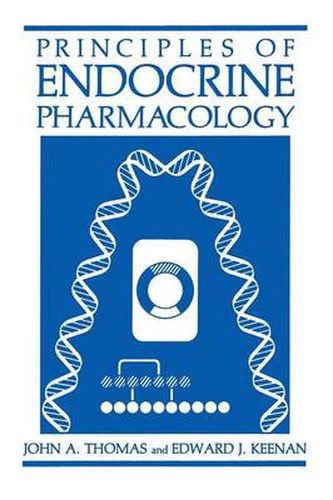Readings Newsletter
Become a Readings Member to make your shopping experience even easier.
Sign in or sign up for free!
You’re not far away from qualifying for FREE standard shipping within Australia
You’ve qualified for FREE standard shipping within Australia
The cart is loading…






This title is printed to order. This book may have been self-published. If so, we cannot guarantee the quality of the content. In the main most books will have gone through the editing process however some may not. We therefore suggest that you be aware of this before ordering this book. If in doubt check either the author or publisher’s details as we are unable to accept any returns unless they are faulty. Please contact us if you have any questions.
The authors have provided an overview of the relationships between hormones that are physiologic constituents of the body as well as their pharmacologic use in replacement therapies and related endocrine dys function. Principles of Endocrine Pharmacology concerns itself with the ther apeutic use of hormones, and hormone like substances, or drugs that can act either by suppressing or enhancing the metabolism of certain glands of internal secretion. Other drugs used for nonendocrine ther apies can likewise affect the endocrine system. Endocrine pharmacology emerged in the early 1900s with the use of crude pituitary extracts. By the mid-1900s several investigators had isolated and begun to synthesize hormones or hormonelike substances. Recognizing the limited supply of hormones that could be obtained both from animal sources and human autopsy material, the search for so called hormone substitutes also began early in the 1900s. Recently, re combinant DNA technologies have been used to provide alternative therapeutic sources of human insulin and human growth hormone. Aside from insulin, perhaps no other use of hormonally-active sub stance is better exemplified by those drugs which affect fertility. The synthesis of an orally-effective steroid represented one of the first major breakthroughs in the chemical suppression of ovulation. Since the orally active 19-norsteroids were introduced in the 1950s, several oral contra ceptive steroid preparations have been marketed. Indeed, the advent of oral contraceptives for birth control has led to a renewed interest in endocrine pharmacology.
$9.00 standard shipping within Australia
FREE standard shipping within Australia for orders over $100.00
Express & International shipping calculated at checkout
This title is printed to order. This book may have been self-published. If so, we cannot guarantee the quality of the content. In the main most books will have gone through the editing process however some may not. We therefore suggest that you be aware of this before ordering this book. If in doubt check either the author or publisher’s details as we are unable to accept any returns unless they are faulty. Please contact us if you have any questions.
The authors have provided an overview of the relationships between hormones that are physiologic constituents of the body as well as their pharmacologic use in replacement therapies and related endocrine dys function. Principles of Endocrine Pharmacology concerns itself with the ther apeutic use of hormones, and hormone like substances, or drugs that can act either by suppressing or enhancing the metabolism of certain glands of internal secretion. Other drugs used for nonendocrine ther apies can likewise affect the endocrine system. Endocrine pharmacology emerged in the early 1900s with the use of crude pituitary extracts. By the mid-1900s several investigators had isolated and begun to synthesize hormones or hormonelike substances. Recognizing the limited supply of hormones that could be obtained both from animal sources and human autopsy material, the search for so called hormone substitutes also began early in the 1900s. Recently, re combinant DNA technologies have been used to provide alternative therapeutic sources of human insulin and human growth hormone. Aside from insulin, perhaps no other use of hormonally-active sub stance is better exemplified by those drugs which affect fertility. The synthesis of an orally-effective steroid represented one of the first major breakthroughs in the chemical suppression of ovulation. Since the orally active 19-norsteroids were introduced in the 1950s, several oral contra ceptive steroid preparations have been marketed. Indeed, the advent of oral contraceptives for birth control has led to a renewed interest in endocrine pharmacology.